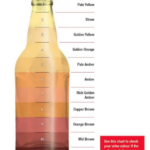Endurance exercise is usually done by people living across a range of environments. This means humidity, temperature and exposure to the sun vary largely. These conditions in combination with metabolic rate and clothing worn increase the body’s core temperature, which in turn is seen through increased blood flow to the skin and increased sweating. Sweat contains water and several important electrolytes. While the rate of sweating varies, it is imperative to replenish the lost water and electrolytes through hydration.
Dehydration of >2% bodyweight is said to be detrimental to performance. In a country like India, with the temperature at its peak through most of the year, hydration becomes an essential determinant of performance. Besides environmental determinants, an individual’s body weight, the duration and intensity of the exercise also play a major role in determining sweat losses. In simple terms, sweat losses are highly individual. Hydration assessment and planning out hydration strategies are thus an integral aspect for endurance athletes.
Simple ways to assess your hydration status: While these methods do have their limitations, they are practical and effective.
Bodyweight changes: For a well hydrated individual, their bodyweight (measured on an empty stomach in the morning after using the restroom) remains relatively stable through the day. Establish a baseline weight. From there on, pre and post exercise weight can be used to determine the % of dehydration, when urine losses and drink volume is accounted for.
Urine colour: Your urine colour can be used as a guide to gauge your hydration status. The lighter the urine colour is, the more hydrated you are. The chart below provides a range of colours. Aim ti ensure your urine colour is between 4-5. However, urine colour cannot be used as a hard and fast tool, as observing colours can be subjective. Moreover, the time of observation matters. If you check your urine after a period of rehydration, chances are it will be yellow/pale yellow. The colour of your first urine in the morning will give you an idea of how hydrated you are starting your day.

It is imperative to assess the hydration status of anyone engaging in endurance activities like running, especially in India. With the marathon season kicking off in July, despite the ‘monsoon’ season, humidity levels are likely to be high. This in turn increases sweat loss. With focus on nutrition and well-planned hydration strategy, performance can be optimised. This article addressed hydration assessment. The following article will entail further information analysing hydration before, during and after an event.
 Sharmada Venkat
Sharmada Venkat
Sports Nutritionist
Part of Dream Runners
